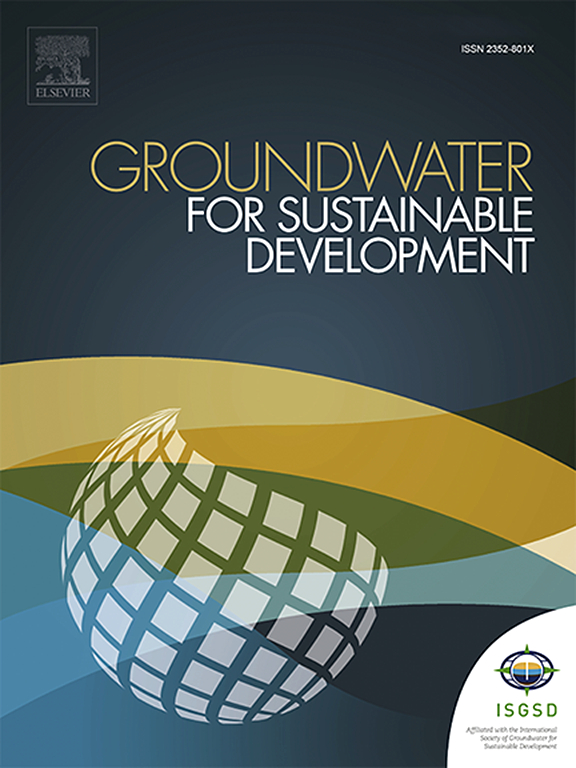Quantitative understanding of the contribution of factors on land subsidence with maximal information coefficient: a case study in Tongzhou, Beijing, China
IF 4.9
Q2 ENGINEERING, ENVIRONMENTAL
引用次数: 0
Abstract
By analyzing the spatial and temporal distribution, evolution law and driving factors of land subsidence in Tongzhou area, we can provide scientific basis for regional disaster prediction, prevention and urban planning. This study utilized the IPTA-based SBAS-InSAR method, incorporating multiple data sources to obtain surface deformation results for Tongzhou District from 2003 to 2018, and the distribution characteristics and spatiotemporal evolution patterns of land subsidence were studied in Beijing's Tongzhou District. Additionally, using the MIC method, combined with spatial analysis techniques and statistical methods, the study analyzed the impact of factors such as groundwater levels in different aquifers and the thickness of compressible layers on land subsidence. The results revealed that land subsidence in Beijing's Tongzhou District is unevenly distributed, with major subsidence areas concentrated in BMAC and Taihu. During the study period, surface deformation rates ranged from −147 to 24 mm/yr, showing an initial acceleration followed by a deceleration trend. The third and fourth aquifers were identified as the dominant factors influencing changes in land subsidence, and interactions between different aquifers may also play a role. For varying compressible thicknesses, the second and third layers were the primary contributors to land subsidence. This study provides valuable insights into the mechanisms of land subsidence in Tongzhou District, offering a foundation for further research and informing decision-making for sustainable urban development.

基于最大信息系数的地表沉降因子贡献定量认识——以通州为例
通过对通州地区地面沉降时空分布、演变规律及驱动因素的分析,为区域灾害预测、预防和城市规划提供科学依据。利用基于ipta的SBAS-InSAR方法,综合多数据源获取2003 - 2018年北京市通州区地表变形结果,研究通州区地表沉降分布特征及时空演化规律。此外,采用MIC方法,结合空间分析技术和统计方法,分析了不同含水层地下水位、可压缩层厚度等因素对地面沉降的影响。结果表明:北京市通州区地面沉降分布不均匀,主要沉降区集中在北部湾和太湖地区;研究期间,地表变形速率为- 147 ~ 24 mm/yr,呈现先加速后减速的趋势。第三和第四含水层是影响地表沉降变化的主导因素,不同含水层之间的相互作用也可能起作用。对于不同的可压缩厚度,第二层和第三层是地面沉降的主要贡献者。研究结果为通州区地表沉降机理的深入研究提供了依据,为城市可持续发展提供了决策依据。
本文章由计算机程序翻译,如有差异,请以英文原文为准。
求助全文
约1分钟内获得全文
求助全文
来源期刊

Groundwater for Sustainable Development
Social Sciences-Geography, Planning and Development
CiteScore
11.50
自引率
10.20%
发文量
152
期刊介绍:
Groundwater for Sustainable Development is directed to different stakeholders and professionals, including government and non-governmental organizations, international funding agencies, universities, public water institutions, public health and other public/private sector professionals, and other relevant institutions. It is aimed at professionals, academics and students in the fields of disciplines such as: groundwater and its connection to surface hydrology and environment, soil sciences, engineering, ecology, microbiology, atmospheric sciences, analytical chemistry, hydro-engineering, water technology, environmental ethics, economics, public health, policy, as well as social sciences, legal disciplines, or any other area connected with water issues. The objectives of this journal are to facilitate: • The improvement of effective and sustainable management of water resources across the globe. • The improvement of human access to groundwater resources in adequate quantity and good quality. • The meeting of the increasing demand for drinking and irrigation water needed for food security to contribute to a social and economically sound human development. • The creation of a global inter- and multidisciplinary platform and forum to improve our understanding of groundwater resources and to advocate their effective and sustainable management and protection against contamination. • Interdisciplinary information exchange and to stimulate scientific research in the fields of groundwater related sciences and social and health sciences required to achieve the United Nations Millennium Development Goals for sustainable development.
 求助内容:
求助内容: 应助结果提醒方式:
应助结果提醒方式:


